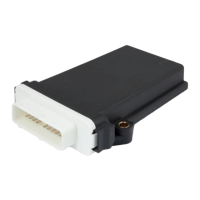7 Teleservice Application Framework
User Manual 129/374
void Callback( const uint8 ou8_Parameter );
function parameter (operand)
Examples
//Prefix examples
/* local variable sint16 */
sint16 s16_VariableName;
/* function internal array of pointers to uint8 with MAX_MESSAGES elements */
uint8 *apu8_Messages[MAX_MESSAGES];
/* Module global variable of type uint32 */
static uint32 mu32_Index;
/* typedef for structure */
typedef struct
{
uint8 u8_Element1;
uint32 *pu32_Element2;
} T_StructType;
/* modul globale pointer to structure defined by typdedef */
static T_StructType *mpt_PointerToMyStructType;
/* function internal used structure */
T_StructType t_MyStructObject;
/* module global structure variable */
static T_StructType mt_MyStruct;
/* typedef for function pointer for a module 'DigIN' */
typedef void (*PR_DIN_CallBack)(const uint8 ou8_Parameter);
/* global function pointer in module 'DigIN' */
PR_DIN_CallBack gpr_DIN_CallBack;
7.3.2.2 Function descriptions
The following gives you a quick overview about how a function description in this document looks like:
First there is a function description (see "Function descriptions" on page 129) that contains the function
prototype and a detailed description.
The information flow (see "Function descriptions" on page 129) contains information about the input/output
parameters (operands) and the returning values (error codes).
Next there is an example code (see "Function descriptions" on page 129) that contains a little
demonstration code.
The examples are meant to show the principle of how to use the function and are not necessarily
compilable.

